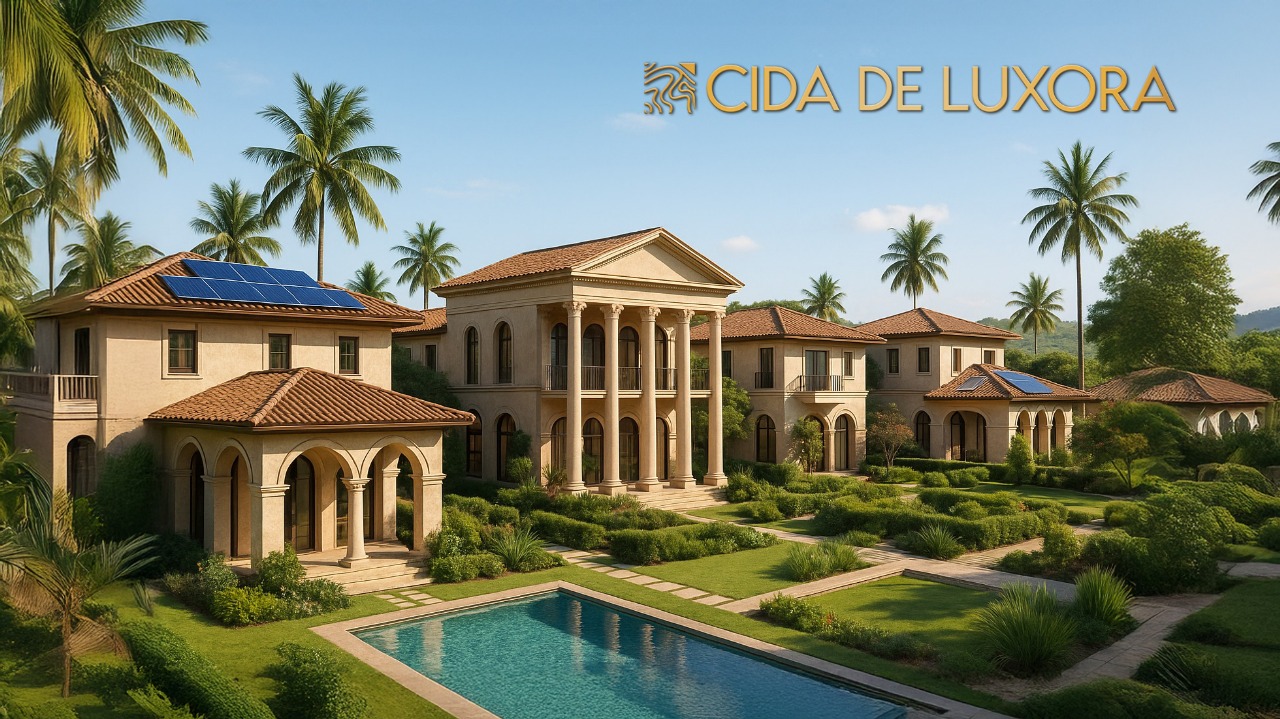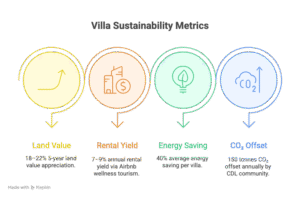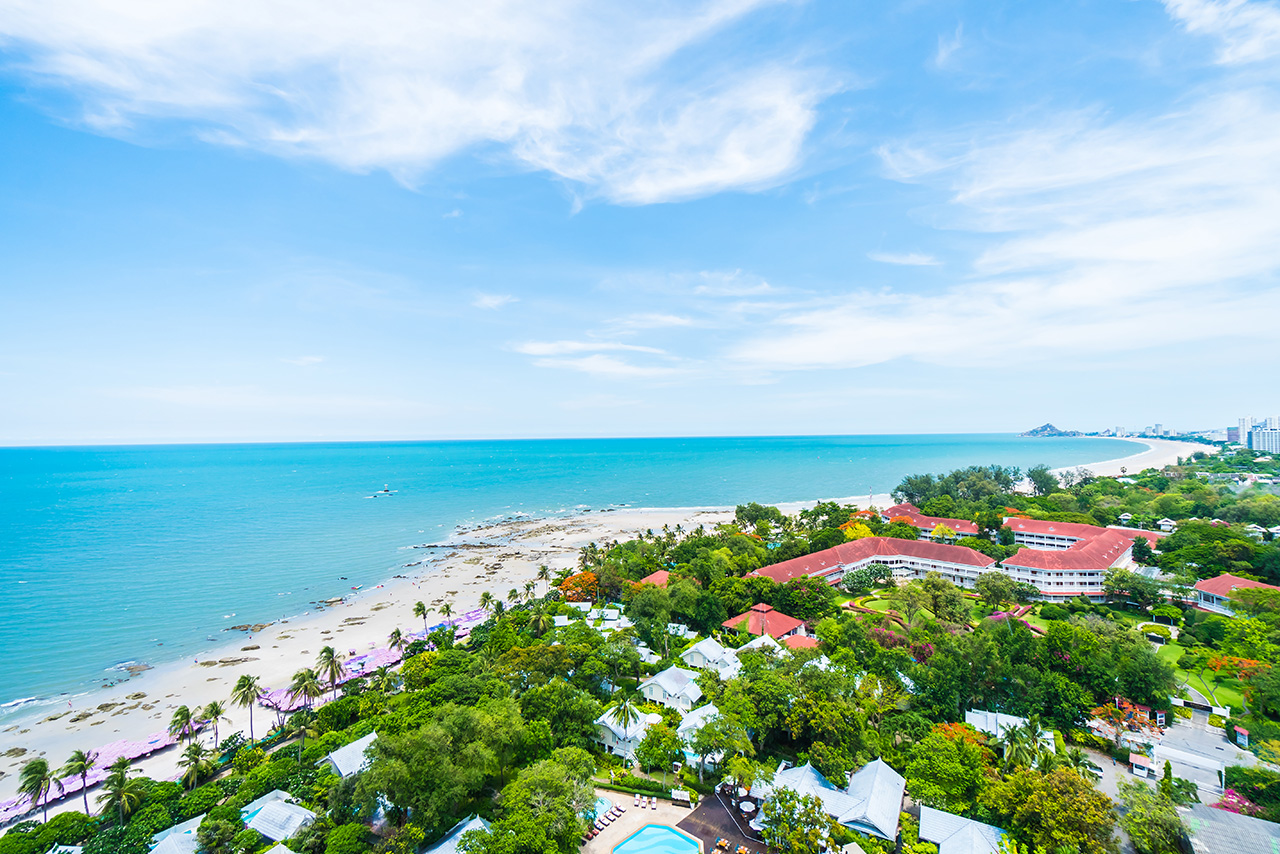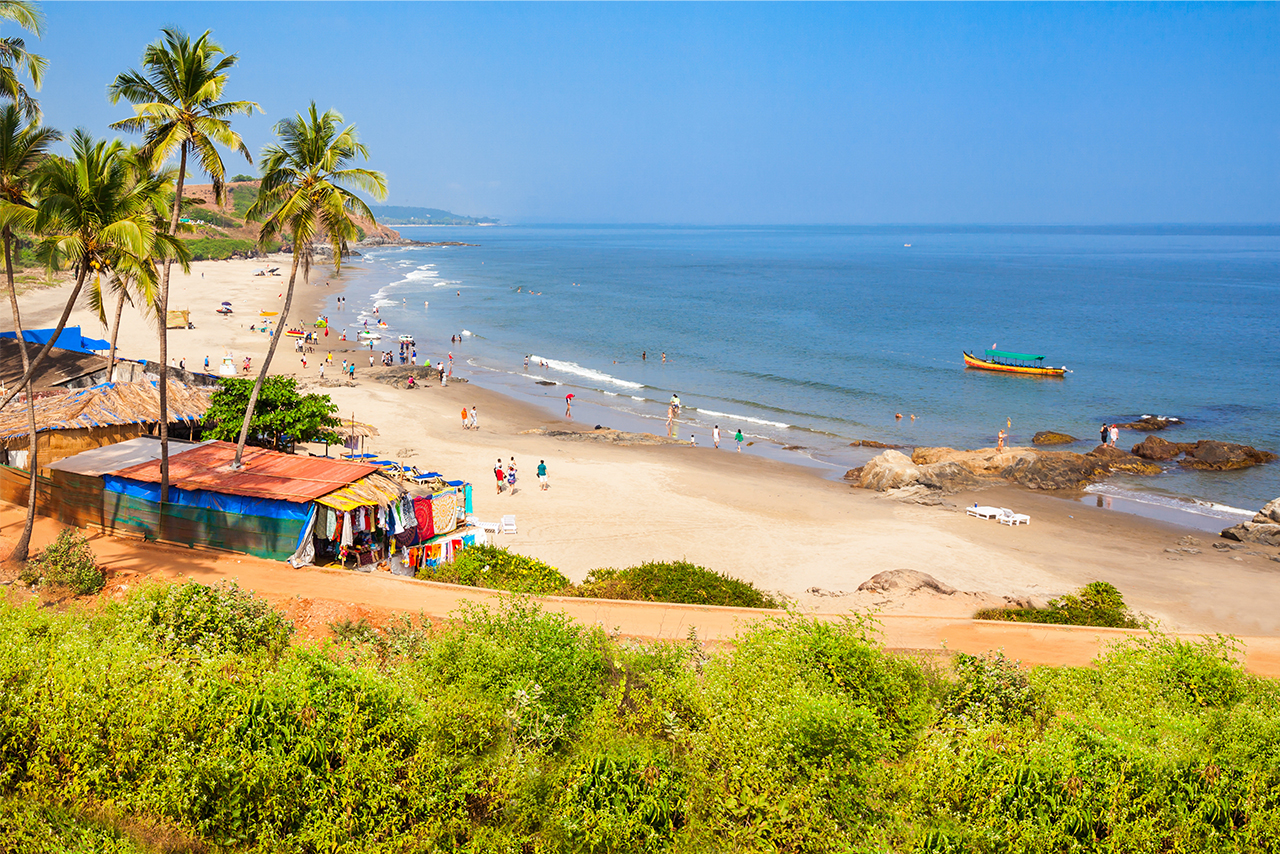Table of Contents
ToggleSustainable Luxury in Maha-Goa: When Air Becomes the New Currency of Living
A Tale of Two Skies: Delhi’s Dust Versus Goa’s Gold Explore sustainable luxury in maha-goa
At 6 a.m., Delhi NCR residents check their air-quality apps the way sailors once checked the tide. Most mornings the number hovers near 350 AQI — air so dense you can taste it. Children cough before breakfast; rooftops disappear into haze; office windows never open.
Now zoom 600 kilometres west to Maha-Goa. The same sunlight falls, but here it filters through green. The average AQI lingers around 40–60 . Sea breeze, salt ions, and forest cover turn every breath into therapy. Where Delhi inhales fear, Goa inhales freedom.
That difference — between mask and morning run — is the foundation of a new kind of luxury investment. It’s called Cida De Luxora (CDL) — an 11-acre, Roman-inspired estate crafted by Nine Divine Group, where architecture is art, and air is wealth.
“In Cida De Luxora, we don’t build to escape nature; we build so nature never leaves you.”
From Concrete to Conscience — The Rise of Sustainable Luxury in Maha-Goa
Across India’s metros, a silent migration is under way. It’s not economic — it’s respiratory. As AQI charts darken, entrepreneurs and professionals are trading square footage for quality of life. The Knight Frank Coastal Report (2024) shows a 35 % jump in queries for coastal plots in Sindhudurg and North Goa.
But few locations offer what CDL does: connectivity without congestion, heritage without humidity, and eco-engineering without aesthetic compromise.
Here, sustainable luxury in Maha-Goa isn’t a marketing phrase; it’s a planning philosophy that balances energy flow, material selection, and community wellbeing.
Architectural Soul: When Rome Meets the Konkan sustainable luxury in maha-goa
Picture arches echoing the Pantheon but cast in locally sourced laterite stone. Imagine colonnades that frame banyan courtyards while rainwater cascades into hidden cisterns. CDL’s design language draws from Roman grandeur but breathes Goan air.
Eco-friendly villa plots in Maha-Goa start from 600 sq. yds, each a canvas for personalised villas that honour classical form and climate science.
Sustainability is structural:
- Cross-ventilation axes aligned for prevailing winds.
- Reflective lime plaster that lowers indoor heat by 4 °C.
- Roofs pitched for solar arrays and rain capture.
- Courtyards engineered for evaporative cooling.
“Every column here has a purpose beyond aesthetics — it frames light, channels wind, and anchors heritage.”
The Tri-Estate Vision: Live, Work, Prosper A sustainable luxury in maha-goa
CDL is not just homes; it’s a three-part urban ecosystem within 11 acres:
A. Luxury Villa Plots
Private parcels that permit true architectural freedom. Residents choose materials — from renewable timber to porous pavers — crafting villas that mirror values.
B. High-End Retail Boulevard
Facing the Mumbai–Goa Expressway (NH-66), the boulevard invites fine-dining brands and boutiques seeking visibility and prestige.
NHAI NH-66 project update
C. Luxury Office Suites
Located along SH-180, these units serve remote founders and creative consultants who value calm over chaos.
Together they create a “15-minute city” before India made it fashionable — where life, work, and leisure flow without a commute.
4. Connectivity That Outruns Congestion
Destination | Time from CDL |
NH-66 Expressway | 2 min |
Sawantwadi Railway Station | 10 min |
MOPA Intl Airport | 35 min |
Chipi (Sindhudurg) Airport | 40 min |
Vengurla Beach | 15 min |
Calangute & Candolim | 45 min |
In urban India, a 35-minute airport run is a luxury itself. Add to that zero traffic horns and an AQI under 60, and you begin to see why eco-friendly villa plots in Maha-Goa are fast becoming the new business class address for HNIs.
5. Amenities That Heal, Not Hurry Explore sustainable luxury in maha-goa
Where metros stack gyms and pools, CDL curates spaces that slow the heartbeat.
Lifestyle & Wellness:
- Roman-style clubhouse with atrium courtyard.
- Spa using organic aromatherapy from Goan botanicals.
- Walking trails canopied by native trees — each absorbing ~20 kg CO₂ a year.
- Open-air yoga pavilions facing sunrise.
Safety & Sustainability:
- 24×7 access control and smart CCTV.
- LED street lighting cutting energy use by 30 %.
- Waste-to-manure composting for on-site gardens.
- Rainwater harvesting reservoir supplying landscapes through summer.
Pollution Economics: Why Air Quality Equals Appreciation Explore sustainable luxury in maha-goa
A 2025 Anarock study notes that sustainable homes appreciate 10–15 % faster than conventional builds. As cities like Delhi and Gurugram see health-linked migration, demand for “clean air addresses” is rising.
For CDL buyers, this means two kinds of returns:
- Biological ROI: Lower health risks from pollution; natural ventilation reduces respiratory stress.
- Financial ROI: Limited inventory (50 plots) plus airport connectivity drives capital appreciation of 18–22 % in five years.
Living Blueprints: How Your Villa Becomes an Energy Machine Explore sustainable luxury in maha-goa
Eco-friendly villa plots in Maha-Goa invite innovation: rooftop solar photovoltaic systems offset ~40 % of annual electricity use; greywater plants save up to 30 % fresh water; cross-ventilation cuts AC dependency by 25 %.
Feature | Impact |
Solar panels | 2 kW system per villa = 1.2 t CO₂ offset yearly |
LED retrofit | 30 % less energy |
Native trees | 70 % less irrigation |
Greywater reuse | 30 % water savings |
Culture, Community & Calm
CDL is strategically positioned near heritage towns like Sawantwadi and Vengurla. Residents can access artisans, markets, and palaces within minutes, turning weekends into cultural resets.
Nearby:
- Sawantwadi Palace (12 min) – wooden toy art revival hub
- Amboli Waterfalls (14 min) – Western Ghats biosphere
- Sindhudurg Fort (40 min) – Maratha coastal marvel
Investment Magnetism: When Air Becomes an Asset Class sustainable luxury in maha-goa
In 2025, the biggest wealth story isn’t crypto or commercial towers — it’s climate-resilient real estate. A 2024 CBRE India survey found that 72 % of HNIs now prioritise “environmental performance” in property decisions.
For these buyers, sustainable luxury in Maha-Goa delivers a triple-bottom-line return:
- Health Capital: Low-AQI environment improves long-term well-being.
- Social Capital: Association with an eco-elite community enhances brand equity.
- Financial Capital: High scarcity, high appreciation, low maintenance.
“As pollution adds invisible debt to city life, land with oxygen dividends outperforms every spreadsheet.”
Airbnb and the Rise of Wellness Tourism and sustainable luxury in maha-goa
Goa’s tourism isn’t seasonal anymore — it’s year-round and wellness-driven. According to the Ministry of Tourism (India), eco-stays and boutique villas have grown 28 % YoY along the Konkan coast.
For CDL owners, that means dual utility:
- Live here six months.
- Lease it on Airbnb / Booking.com for the other six.
With luxury demand shifting from party villas to purposeful retreats, a Roman-inspired, green-certified home becomes a magnet for global digital nomads.
The Psychology of Clean-Air Living with sustainable luxury in maha-goa
In Delhi NCR, air pollution reduces average life expectancy by 9.7 years (Energy Policy Institute at Chicago, 2024). That statistic alone drives the current migration wave.
At Cida De Luxora, every design decision is a psychological intervention:
- Noise is replaced by birdsong.
- PM2.5 is replaced by oxygen-rich breezes.
- Grey walls are replaced by coastal blue.
Residents describe a curious phenomenon: they slow down — and somehow speed up their thinking. When the brain isn’t battling toxins, it creates.
Comparative Snapshot: Delhi NCR vs Maha-Goa sustainable luxury in maha-goa
Indicator | Delhi NCR | Maha-Goa (CDL Zone) | Source |
Average AQI (Oct–Dec 2024) | 350–410 | 35–60 | CPCB / IQAir |
Annual Rainfall | 600 mm | 2,800 mm – recharges aquifers | IMD Data |
Avg Temp Summer | 42 °C | 31 °C | IMD Data |
Green Cover % | 12 % | > 45 % within 10 km radius | Forest Survey of India |
Life Expectancy Impact | –9.7 years | Baseline India + 3 years | EPIC Index |
When environment becomes equity, CDL stands unbeatable.
Crafting a Villa that Feels like a Breath
Design freedom is not an aesthetic privilege — it’s a sustainability enabler.
Owners of eco-friendly villa plots in Maha-Goa can collaborate with architects to:
- Maximise cross-ventilation axes.
- Add solar pergolas for power generation.
- Introduce green roofs with native creepers.
- Install drip irrigation and greywater reuse systems.
Average operating energy reduction = 35 %.
Payback period for solar setup ≈ 4 years.
Sustainability Beyond Bricks — CDL’s Circular Model
Cida De Luxora implements a micro-scale circular-economy model:
- Waste-to-compost unit converts 1.5 tonnes organic waste/month.
- Drip irrigation grid covers > 70 % of landscape area.
- Solar streetlights = zero grid cost for common areas.
- Greywater treatment plants save ~ 30 % fresh water.
The project aligns with UN SDG 11 (Sustainable Cities) and SDG 13 (Climate Action).
The Social Fabric: Boutique Community, Big Heart
Only 50 villa plots mean everyone knows everyone — minus intrusion.
Morning jogs turn into conversations, art evenings spill into the boulevard cafés, and community farming on shared patches becomes both therapy and bonding.
In metro projects of 500 units, anonymity is a feature. In CDL, belonging is.
Education, Healthcare & Civic Comfort
CDL’s location ensures families don’t trade wellness for isolation. Within 10 minutes you reach:
- Sindhudurg Sainik School & Junior College (6.5 km)
- KCR Institute of Hotel Management (2 km)
- Yashraj Hospital (18 min)
- Sub-District Hospital (12 min)
Add reliable broadband and modern civic infrastructure under the Sindhudurg Smart City Plan 2025, and you see why CDL is both vacation and vocation ready.
Comparative Advantage: Scarcity Economics sustainable luxury in maha-goa
Limited Supply, Limitless Desire
Only 50 plots. No future expansion phases to dilute exclusivity. Result: value compounds by scarcity.
Infrastructure Tailwind
NH-66 six-laning project cuts Mumbai–Goa drive time by 25 %. Two airports ensure dual connectivity for domestic and international travel.
Legal & Financial Clarity
Government-approved layouts and bank tie-ups streamline ownership.
Numbers that Speak
Metric | Value | Source |
Project Size | 11 acres landscaped | CDL Investor Deck |
Villa Plot Size | From 600 sq. yds up | Developer Data |
Total Plots | 50 exclusive | Developer Data |
Projected 5-Year ROI | 18 – 22 % | Local Valuation Reports |
Airbnb Yield Potential | 7 – 9 % annually | Airbnb Data 2024 |
Energy Savings | 30 – 40 % per villa | IGBC Standards |
The Emotional Dividend
You can’t quantify what happens when you replace traffic noise with tropical rain.
When a house stops being an enclosure and starts being an ecosystem, you get something rarer than yield: peace per square foot sustainable luxury in maha-goa.
For families who have spent years inside purified air bubbles, Cida De Luxora feels like a reset — Roman heritage bones, Goan soul, modern mind.
“In CDL, luxury isn’t louder — it’s cleaner.”
FAQ
- What defines sustainable luxury in Maha-Goa at CDL?
A fusion of Roman architecture and green engineering — solar readiness, rain harvesting, native landscaping and low-energy materials. - What are the sizes of eco-friendly villa plots in Maha-Goa?
From ~600 sq. yds upward with custom design freedom. - How is air quality different from Delhi NCR?
Delhi AQI ≈ 350+, Maha-Goa ≈ 40–60 — one of India’s cleanest belts (IQAir) sustainable luxury in maha-goa. - What amenities support wellness?
Clubhouse, spa, yoga pavilions, landscaped trails and 24×7 concierge. - Can I customise my villa?
Yes, buyers choose materials and systems (solar, EV, greywater). - Are there commercial opportunities?
Limited retail and office suites within CDL facing NH-66 & SH-180. - Who develops CDL?
Nine Divine Group, specialising in heritage-inspired sustainable projects. - Is the project approved and finance-enabled?
Yes, government-approved layouts with leading bank tie-ups. - What returns can I expect?
Projected capital appreciation 18–22 % in five years plus rental yield 7–9 %.



